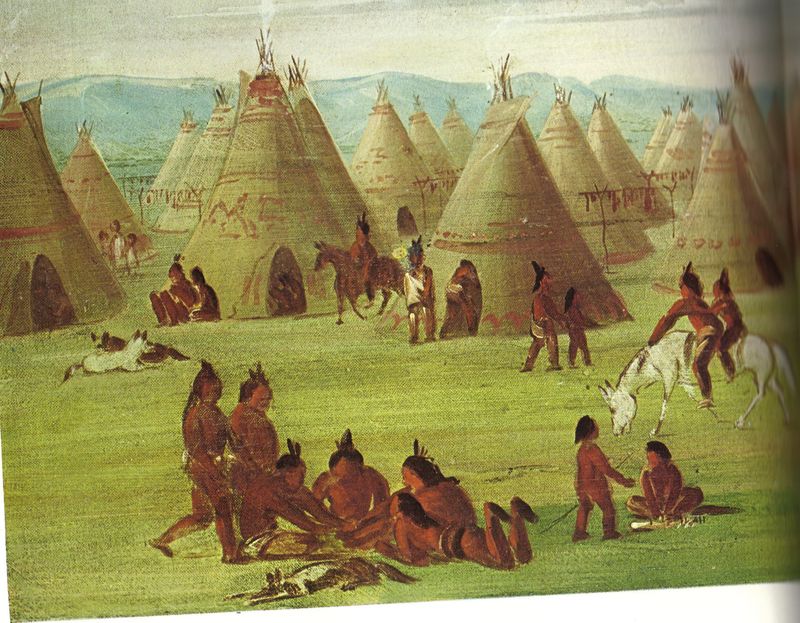

The Comanche became the first Plains people to make extensive use of horses, and by 1750 their men, women, and children were excellent riders. Horses transformed the lifestyle of these wanderers, who had always hunted on foot.

Sometime before 1705 they acquired horses from their Ute (see entry) neighbors, who had gotten the animals from the Spanish in Mexico. They migrated south from the mountains of Wyoming and Montana onto the Great Plains. The Comanche separated from their relatives, the Shoshone (see entry), in the late 1600s. They were cunning fighters who learned how their enemies thought, and they added to their population base by adopting captured prisoners into the tribe. Comanche resistance is largely responsible for slowing the settlement of the American West during the nineteenth century. military in a fierce defense of their lands. They also took on the Spanish, the American settlers, the Texas Rangers, and the U.S. Loosely organized into wandering groups of highly skilled horsemen and warriors, the Comanche fought with nearly every Plains tribe at one time or another.

Often referred to as the “Lords of the Southern Plains,” the powerful Comanche tribe once controlled a vast expanse of territory known by the Spanish term Comanchería (“land of the Comanche”). They also fought the Kiowa, Kiowa-Apache, Cheyenne, and Arapaho, but eventually made peace with these tribes. They took over land occupied by other tribes including the Cherokee, Choctaw, Creek, Crow, and Apache. The Comanche then separated from the Shoshone and migrated south from Wyoming and Montana along the eastern slopes of the Rocky Mountains. The Comanche were a branch of the Shoshone tribe until the 1600s. Of that number, 6,643 resided in Oklahoma (3,947 of them lived on the reservation). In 2000 the census reported 10,518 Comanche residing in the United States and a total of 21,852 people who had some Comanche heritage. Census, 11,267 people identified themselves as Comanche (170 identified themselves more specifically as Oklahoma Comanche). The population declined to 1,500 in 1900 as a result of wars and diseases. There were about twenty thousand Comanche at the height of their power in the early 1800s. The reservation is located 87 miles (140 kilometers) southwest of Oklahoma City, Oklahoma, in Lawton. In the early twenty-first century descendants of the Comanche share reservation lands with the Kiowa and Apache tribes. Later they roamed the southern Great Plains, including parts of Texas, New Mexico, Oklahoma, Kansas, Colorado, and Mexico. Locationīefore Europeans arrived the Comanche and Shoshone lived along the upper Platte River in eastern Wyoming. For example, the Kiowa called them Bodalk Inago or “snake men” and the Arapaho gave them the name Catha (“having many horses”). Many other tribes had names for the Comanche. The Comanche (pronounced cuh-MAN-chee) called themselves Numinu or Nemene (the word has various spellings), meaning “people.” Their name may have come from the Ute word for the tribe, Koh-Mahts, which means “those who are against us” or “those who want to fight us.” The Spanish called them Camino Ancho, meaning “wide trail.” They later altered the spelling to “Komantcia” and the Americans changed it to Comanche.


 0 kommentar(er)
0 kommentar(er)
